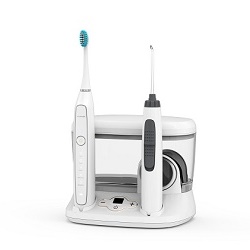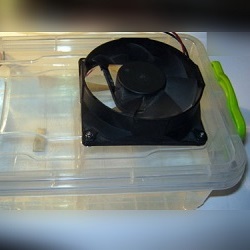Homemade air cleaner for home
In general, problems with clean air prevail in large cities. The air is polluted by exhaust gases, various fumes and dust, emissions of enterprises, etc. This air enters our homes, accumulates in the rooms, people breathe them, sometimes without even knowing that their health gradually begins to deteriorate precisely because of the polluted atmosphere. Most people do not even know that this problem can be solved by a simple air cleaner, bought or made by hand.
Content
How the air purifier works
So, to get rid of small particles present in the air, many methods of its cleaning were invented. But they all share one operating principle: the flow of polluted air is sucked into the unit, passes through a filter (it can be water, electrostatic, coal or other) and is blown out by the fan to the outside already cleaned of dirt.
The figure below shows the principle of operation of the air purifier, in which several purification phases are combined, where air passes through a coarse filter, an ionizer and a UV emitter. Further, the air flow is confronted with water, which takes away particles of dust, and leaves the unit already humidified, clean and with negatively charged oxygen ions.

There is a large number of devices on sale, both of complex construction and of simpler, successfully purifying the air in rooms. But for some consumers, the price of them may seem overpriced, and therefore they are prone to improvisation and making such devices with their own hands. To design an electronic device at home with the use of high technology, you can hardly. But to collect some simple models of air purifiers for a home master is quite capable.
Air Purifier Options
First of all, it should be understood that the design of the air purifier depends on the conditions and for which purposes an air purifier will have to be used. For example, if the room has normal humidity, but dust flies in the air, you can remove it by making car filter cleaneras in this video.
Air Purifier for Dry Rooms
In rooms with low humidity, in addition to cleaning from dust, it is required to raise this humidity to values at which a person will feel more comfortable, namely up to 40-60%.
A simple device for these purposes is easy to assemble yourself, and it will consist of a plastic container and a cooler from a computer. This is done simply.
- Cut 2 holes in the lid of the container: one for the fan, the other for air.
- Screw the cooler to the lid with self-tapping screws.
- Connect the fan to the power supply from the phone on 5v or specially purchased, on 12v. In the second case, the speed of the cooler will be higher and, accordingly, the performance of the unit will increase.

- To better remove dust from the air, it is possible to pull several rows of a fishing line inside the tank across the air movement and hang it microfiber cloths or any dense fabric in such a way that they do not adhere to the sides of the tank, and air can pass to the outlet. Much of the dust in the air stream will settle on damp cloth and water. If the outlets are drilled into the side walls (4 cm above the water level), then the fabric can be hung over the entire width of the container, and it will not impede the flow of air to the exit.
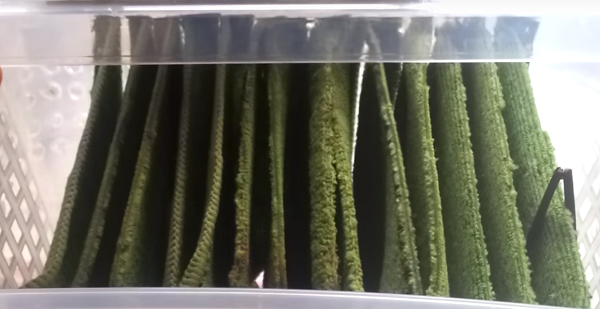
Wet room cleaner
The increased humidity in the room also brings a lot of problems: reproduction of pathogenic bacteria, rapid growth of mold fungi on the walls, damage to furniture and musical instruments, etc. Also, high humidity is harmful to the garage, or rather to the car in which you keep it. To dry and clean the air, you will need to use materials that can absorb excess moisture. The simplest material is ordinary. salt.
Before using for this purpose, salt should be roasted for several hours in the oven. Only in this case, it will most effectively absorb moisture from the air.
A self-made apparatus for cleaning and drying air is done in the same way as for humidification, but with slight differences:
- large fan speeds are not required (salt will scatter across the container), so it will be enough to charge from the phone with 5V output;
- instead of water, a thick layer of salt 3-4 cm is poured on the bottom of the tank.
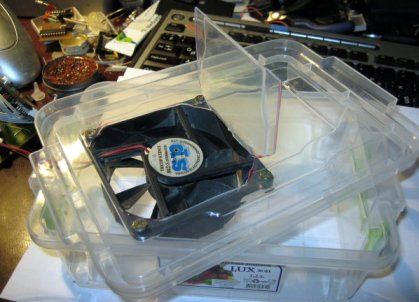
However, technical progress does not stand still, and a more effective moisture absorbing material is found - this silica gel. You met him, buying shoes - these are bags with small balls.
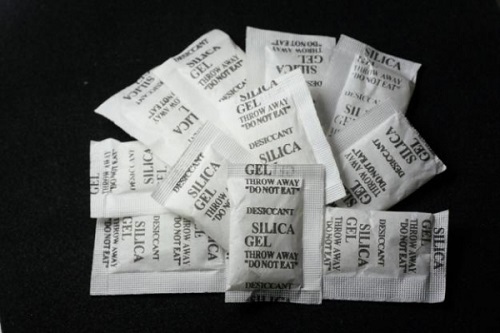
Silica gel is a non-toxic substance consisting of silica.
Care should be taken if there are small children in the house. Make sure that the child does not eat this substance, as it may contain cobalt chloride - poison if taken inside.
Silica gel can be purchased in different packaging in Chinese online stores. The advantage of this tool over conventional salt is that in order for the unit to work effectively it will require a significantly smaller amount.
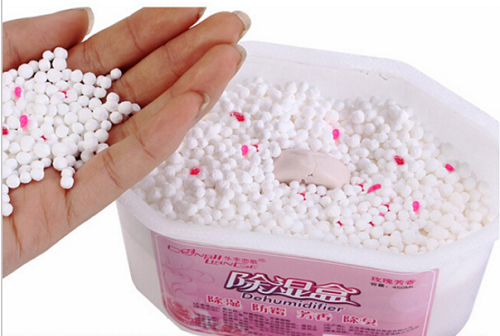
Some types of silica have special coloringas shown in the following photo.
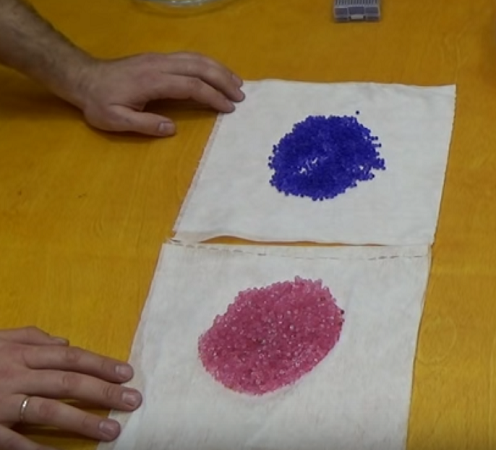
This dye acts as an indicator: when the crystals are dry, it is blue, but when the substance absorbs the maximum moisture - it becomes pink.To restore the crystals, they are placed in the microwave for 8 minutes at the lowest power. Based on these data, silica gel works more effectively in devices that clean the air from moisture.
Carbon filter cleaner
The use of activated carbon for air purification is indicated if the removal of unpleasant odors from it is required, for example, when it is necessary to get rid of tobacco smoke. Coal is also effective in removing some toxic substances dissolved in the air. A simple carbon cleaner can be made from plastic pipes, but first you need to prepare the necessary materials:
- two meter sewer pipes (waste), with diameters of 200/210 mm and 150/160 mm;
- adapter (vent) - diameter 150/200 mm;
- plugs for 210 and 160 mm;
- metal mesh (you can use the paint, with a small cell size);
- hose clamps;
- agrofibre;
- aluminum tape;
- about 2 kg of any activated carbon;
- drill with nozzles;
- sealant;
- big needle and nylon thread.
The figure below shows what the adapter, plug and pipe looks like.
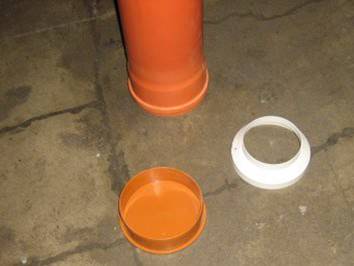
Below is the algorithm for performing the work.
- Cut the outer tube (200/210 mm) to 77 mm and the inner pipe (150/160 mm) to 75 mm, remove all the burrs.
- Turn the inner tube with the thick side up and cut off the edge so that it fits better to the plug.
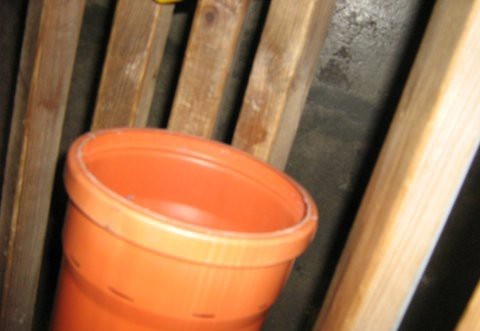
- It is necessary to drill as many holes as possible on the inner pipe. In this case, the drill diameter is 10 mm.

- Drill holes in the outer tube using a crown with a diameter of 30 mm.

- The remaining circles after drilling do not throw away, they are still useful for spacers.

- Both pipes should be covered with agrofiber, and sew it with a nylon thread.

- Next, you should wrap the outer tube with a paint net and sew it with the use of 2 clamps 190/210 for convenience. They will ensure a good adherence of the mesh to the pipe. Tightening the grid is required at the beginning on the thick side of the pipe.
- Sew a slightly curved needle with a nylon thread across the entire length of the net, rearranging the collars as you sew.


- Remove the protruding ends of the mesh with nippers, and the excess agrofiber with scissors or a blade.
- First, the inner tube should be wrapped with a metal mesh, and after that with agrofibre.

- Fix the edges of the pipes with aluminum tape.
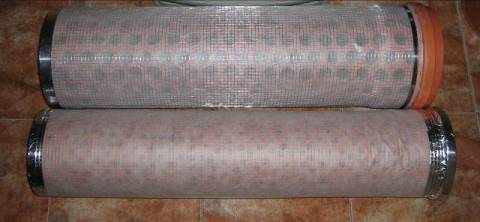
- Insert the inner tube into the cap strictly in the center, using spacers from the circles, then fix it either with mineral wool or secure it.

- Insert the inner tube into the outer tube.

The next step in the manufacture of the filter will be coal refilling. It is recommended to use coal with a fraction of 5.5 mm of brand AR-B. But it is possible and another, for example, the one that is used for water purification with a fraction of 2.5 mm.
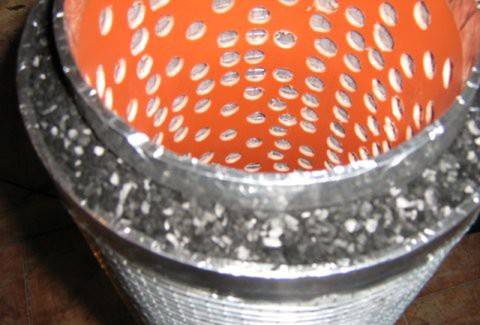
Before refueling, coal must be sifted through a sieve to remove fine dust from it.
Coal is poured slowly, so as not to form voids. The filling will take about 2 kg of coal. When filling, it is necessary to knock the pipe on the floor from time to time so that the filler fills the entire space evenly.
When the space between the pipes is completely filled, put on the adapter, which will serve as a lid holding the coal. After that, using a sealant, cover a small gap between the adapter and the inner tube.
At this stage, the air cleaner assembly is completed. After the sealant dries, a channel fan can be inserted into the adapter so that it draws air from the filter and blows it into the room. You can also apply this filter to your home by building it. in the supply air line.
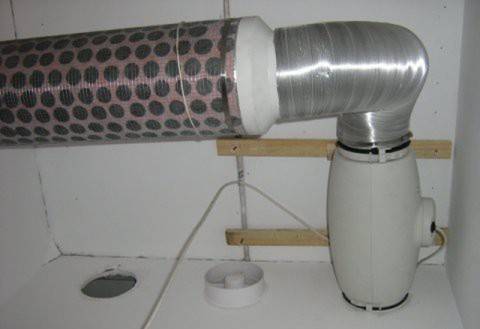
Thanks to him, clean, odorless air will flow into the house.

/rating_on.png)







